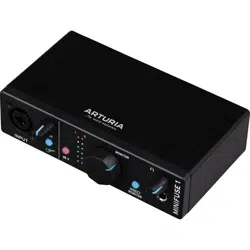Loading ...
Loading ...
Loading ...

8.3. Buffer Size
Buffer size is expressed in samples and is usually found in your application's audio settings.
Think of the buffer like a bucket. As soon as it fills up with samples, it is carried away to
the output. So, the smaller the bucket (buffer) the quicker it will get filled up and sent to the
output, and therefore will play back with less latency. The trade off, however, is that smaller
buffer sizes require your computer's CPU to work harder. Conversely, the bigger the bucket
(buffer) the longer it will take to fill up and be sent to the output. This decreases the load on
your CPU at the expense of more latency. As you will see below, changing the buffer size
depending on the type of audio task being performed is common practice.
If you experience clicks and pops in your projects, try increasing the buffer size in your host
application or the audio driver.
8.4. A red herring
When experimenting with these settings, you may notice that latency decreases noticeably
when using higher sample rates at the same buffer size. To go back to the bucket analogy,
the sample rate is like water flowing through a hose - if your increase the water flow (higher
sample rate), the same bucket will fill up faster and will be carried away to the output
sooner. However, keep in mind that high sample rates come at a cost of significantly higher
CPU usage, so this is not a recommended way of dealing with latency.
30 Arturia - User Manual MiniFuse 1 - A QUICK PRIMER ON DIGITAL AUDIO
Loading ...
Loading ...
Loading ...
